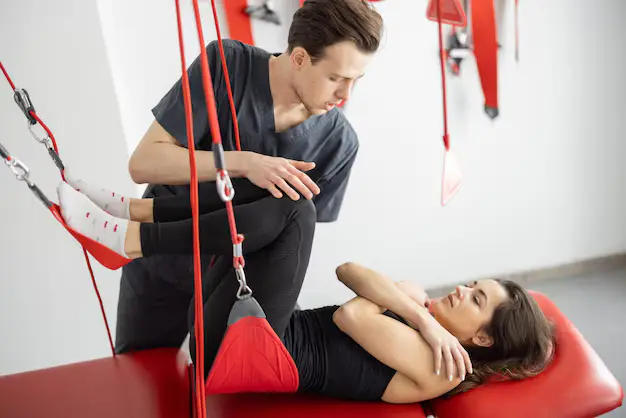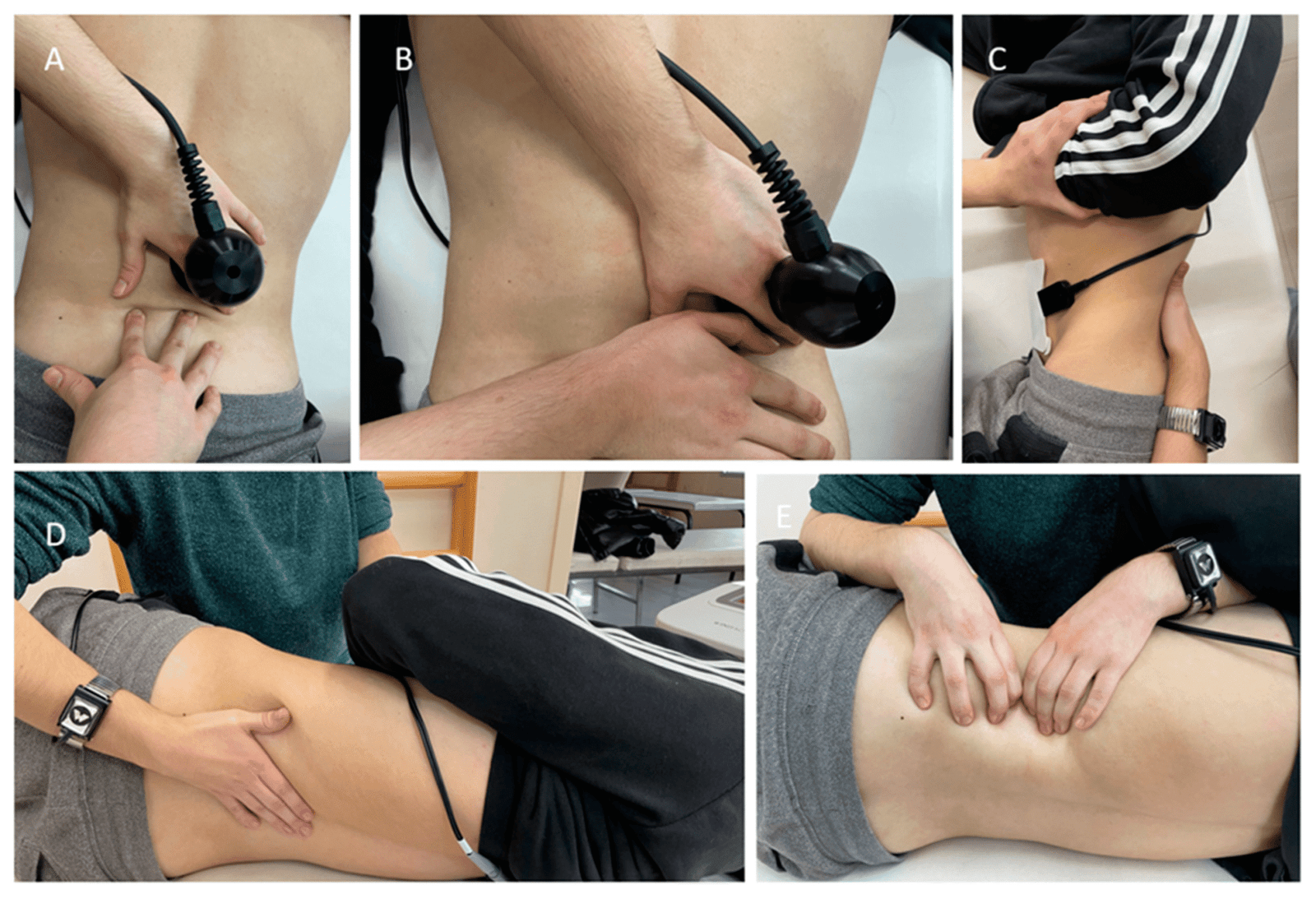Walk into any gym today and you’ll see rows of determined faces, bodies pushing against iron, cardio machines buzzing, and personal trainers shouting cues. The modern fitness culture celebrates strength, endurance and aesthetic progress.
Beyond the Workout
Why Every Gym-Goer Needs a Physio Check-In
On this page
- The Hidden Risks of Modern Training
- What a Physiotherapist Actually Does for Gym-Goers
- Why Every Gym-Goer Benefits from a Physio Check-In
- Common Gym Scenarios Where Physio Input Helps
- How a Physio Check-In Works
- The Science Supporting Physio Involvement
- What to Ask Your Physiotherapist
- Action Steps for Gym-Goers
- Conclusion


Introduction: Fitness Culture’s Blind Spot
Walk into any gym today and you’ll see rows of determined faces, bodies pushing against iron, cardio machines buzzing, and personal trainers shouting cues. The modern fitness culture celebrates strength, endurance and aesthetic progress. Yet one crucial piece is often missing: regular physiotherapy check-ins..
Most gym-goers meticulously plan their workouts, buy supplements, and track macros, but rarely schedule time to have their movement patterns, posture, or injuries evaluated by a physiotherapist. This oversight can limit progress and, worse, increase the risk of injury.
This article explores why every gym-goer, regardless of experience level, should consider routine physiotherapy consultations not just as a reaction to pain but as a proactive strategy to maximise performance, longevity and overall health.
The Hidden Risks of Modern Training
High Volume, High Intensity
Today’s workout trends such as CrossFit, HIIT, powerlifting, hypertrophy splits encourage high intensity and high volume. This environment accelerates results but also multiplies stress on joints, muscles, and tendons. Without proper recovery and monitoring, subtle imbalances accumulate into overuse injuries.
Examples of common gym-related injuries:
- Shoulder impingement or rotator cuff strain from pressing movements
- Patellofemoral pain syndrome from heavy squats or lunges
- Lower back pain from deadlifts with poor form
- Tendinopathies (elbow, Achilles, biceps) from repetitive loading
The Myth of “No Pain, No Gain”
Many fitness enthusiasts interpret soreness or discomfort as a badge of honour. While mild post-exercise soreness (DOMS) is normal, sharp pain, joint clicking, or persistent tightness are red flags. Ignoring these signals can transform a manageable problem into a long-term injury.
Physiotherapists are trained to differentiate between normal training adaptation and pathology. Regular check-ins help you understand when to push through and when to rest.
What a Physiotherapist Actually Does for Gym-Goers
Contrary to popular belief, physiotherapy is not only about post-surgery rehab or elderly care. In the fitness context, a physiotherapist acts like a movement specialist. Their role includes:
- Biomechanical assessment: Analysing posture, gait, joint alignment, and movement patterns
- Injury prevention screening: Identifying weak links, muscular imbalances, or restricted mobility before they become symptomatic
- Exercise modification: Suggesting technique tweaks or alternative exercises to accommodate limitations
- Recovery strategies: Advising on stretching, foam rolling, or load management to enhance tissue recovery
- Performance enhancement: Guiding mobility and activation drills that improve lifting form and range of motion
This proactive approach complements the work of personal trainers and strength coaches, creating a 360-degree view of your health and performance.
Why Every Gym-Goer Benefits from a Physio Check-In
- Early detection of problems
Physiotherapists can spot asymmetries and dysfunctional patterns long before pain develops. For example, limited hip mobility may not hurt today, but it could compromise your squat form and strain your knees over time. Addressing it early saves months of frustration. - Personalised corrective strategies
Online mobility routines are generic. A physio tailors exercises to your exact needs. They might prescribe specific glute activation drills to stabilise your knees, thoracic spine mobility work to improve overhead pressing, or core stability progressions to protect your lower back. - Faster recovery and reduced downtime
Even minor injuries like a mild muscle strain can sideline your training for weeks. A physiotherapist accelerates recovery through manual therapy, graded loading, and evidence-based rehab protocols. That means less time off the gym floor and more consistent progress. - Education on body awareness
A good physio does not just treat; they teach. You learn to interpret your body’s signals, warm up effectively, and integrate recovery practices. This knowledge empowers you to train smarter and stay injury-free.
Common Gym Scenarios Where Physio Input Helps
- The Newcomer
New gym-goers are at high risk of poor form because they lack motor awareness. A physiotherapy check-in can establish a baseline assessment and highlight key areas to strengthen or mobilise. This prevents “rookie injuries” and sets a safe foundation for future training. - The Plateaued Lifter
If your lifts have stalled or certain movements always feel awkward, the issue might be mobility or stability rather than programming. Physiotherapists can pinpoint these bottlenecks and design a targeted plan to unlock new progress. - The Pain-But-Training Athlete
Many fitness enthusiasts push through discomfort because they fear losing gains. A physio can evaluate whether it is safe to train around an injury and how to modify exercises to avoid worsening it. - The Older Gym-Goer
Age brings changes in joint health, tissue elasticity, and recovery capacity. Regular physiotherapy consultations help adapt training to these realities, maintaining strength without overstraining vulnerable areas.
How a Physio Check-In Works
A typical session for a gym-goer may include:
- History and goals: discussion about your workout routine, injuries, and objectives
- Movement assessment: squat, hinge, push, pull, and carry patterns analysed for quality
- Range of motion testing: joints checked for flexibility, stability and asymmetry
- Strength and activation testing: identifying weak or inhibited muscles
- Intervention and education: corrective exercises, manual therapy if needed, and a personalised plan to integrate into your warm-up or cool-down
These sessions do not have to be weekly. Many people benefit from a quarterly check-in, with more frequent visits during injury rehab.
The Science Supporting Physio Involvement
Research consistently shows that:
- Prehabilitation (pre-injury conditioning) reduces injury risk in athletes
- Movement screening (like FMS or SFMA) helps predict injury likelihood
- Tailored exercise therapy outperforms generic routines in pain reduction and function improvement
Physiotherapists translate this evidence into practical, gym-friendly programs.
Integrating Physio With Your Training Team
- Collaboration with trainers
Trainers excel at programming for fitness goals, physiotherapists excel at analysing movement and tissue capacity. When both collaborate, you get a program that is safe, effective and sustainable. - Communication is key
Share your physio’s recommendations with your trainer. Simple adjustments such as stance width, load progression, or warm-up drills can prevent setbacks.
Overcoming the Barriers
- “I’m not injured, so why see a physio?”
Think of it like dental care. You do not only visit the dentist when you have a cavity. Preventive visits keep problems from escalating. The same applies to your musculoskeletal health. - Cost concerns
Many clinics offer short assessment packages or combine sessions with personal training plans. Considering the cost of supplements, gear, and gym memberships, investing in a periodic physio check-in is modest compared to the expense of treating a major injury. - Time constraints
Most assessments fit into a 45-minute slot and can be scheduled around your rest days. The time saved by preventing injuries far outweighs the time spent on a check-in.
What to Ask Your Physiotherapist
When you schedule a check-in, prepare questions like:
- Are there any movement restrictions I should address before increasing my weights?
- How can I warm up more effectively for my main lifts?
- Which recovery modalities (stretching, foam rolling, mobility drills) suit me best?
- How should I modify training if I feel early signs of pain or fatigue?
This proactive dialogue ensures you leave the session with actionable strategies.
Case Snapshots
- The Shoulder Pain Bencher
Ravi, 27, loves heavy bench press. After months of pushing through shoulder discomfort, he booked a physio check-in. The assessment revealed poor thoracic extension and weak scapular stabilisers. With targeted mobility work and activation drills, his pain vanished, and his bench numbers went up. - The Knee-Aching Squatter
Meera, 35, a recreational lifter, struggled with knee pain during squats. The physiotherapist identified hip muscle imbalances and ankle stiffness. After a month of prescribed exercises, she squatted pain-free and improved her depth.
These examples show how minor adjustments guided by a physiotherapist can yield major benefits.
Preventive Physio: Building a Long-Term Strategy
A single appointment can be eye-opening, but the real magic happens when you integrate physiotherapy into your long-term fitness journey. Some tips:
- Schedule an initial baseline assessment when you start a new program
- Follow up quarterly or biannually for movement re-screens
- Revisit immediately if you develop pain, swelling or decreased range of motion
- Keep your physio updated about major changes, new training styles, significant weight gain or loss, or performance goals.
The Holistic Health Perspective
Fitness is not just muscles and strength. It is a balance of mobility, stability, cardiovascular health, nutrition, recovery, and mental well-being. Physiotherapists understand how all these systems interact. Their input can help you:
- Improve sleep and recovery routines
- Adjust posture for desk jobs that sabotage your lifts
- Manage stress and breathing patterns to enhance performance
By thinking beyond the workout, you embrace a truly holistic approach to fitness.
Action Steps for Gym-Goers
- Audit your current routine. Any recurring pain, stiffness, or asymmetry?
- Research qualified physiotherapists in your area with sports or orthopaedic expertise
- Book a baseline assessment, even if you feel “fine”
- Implement the recommended drills into your warm-up or cool-down
- Reassess periodically and adjust as your training evolves
The Payoff: Training Longevity and Confidence
Regular physiotherapy check-ins give you confidence that your body can handle your training load. You recover faster, lift with better form, and enjoy a longer, healthier fitness journey. Instead of fearing injuries, you know you are actively preventing them.
Conclusion: Think Beyond the Workout
Modern fitness culture excels at pushing limits but often neglects the foundation: healthy movement. Every gym-goer, whether beginner, weekend warrior, or seasoned lifter, can benefit from regular physiotherapy check-ins. These proactive sessions identify problems early, optimize performance, and reduce downtime from injuries.
So, next time you schedule your workout split, supplements, or gear, also schedule a physiotherapy appointment. Think of it as investing in your body’s longevity. The ultimate personal record is staying pain-free and active for life.
If you’re serious about your health and performance, do not wait for pain to dictate your choices. Book a physiotherapy check-in today with a trusted clinic or sports rehab specialist. Your future self, stronger, healthier, and injury-free, will thank you.








